The Toyota Tundra hasn’t changed much over the past ten years – but that’s not necessarily a bad thing . . .when it comes to trucks.
For instance: The Tundra – unlike many of its rivals – hasn’t got a turbocharged, direct-injected V6, a ten speed transmission or an aluminum body.
Instead, it comes standard with a powerful V8 without direct injection paired with a six-speed automatic and a harder-to-hurt (and easier to fix) fix steel body.
As Mr. Burns used to say . . . excellent!
There is some bad news, though – if you don’t need more than two doors.
Or want a longer truck.
Toyota has discontinued the regular cab version of the Tundra. Which – along with an eight foot bed – was the configuration best suited to work and cargo-hauling.
You can still get the 8 foot-foot bed. But you have to buy the Double Cab – and four doors – to get it.
Which also gets you about a foot more truck, too.
The Tundra is Toyota’s full-size pick-up.
Unlike the Big Three 1500s – the Chevy Silverado, Ford F-150 and Ram 1500 – which all come standard with little V6s – the Tundra comes standard with a big V8.
Also standard is a best-in-class towing capacity and the absence of elaborate mechanical artifices such as direct-injection, multiple turbos, transmissions with as many gears as a Kenworth and a body made of an alloy that costs more to fix when bent.
However, the Tundra does cost more to start – and it doesn’t offer as many cab/bed configurations as they do – especially now that the regular cab version has been discontinued.
Base price is $31,120 for an SR Double Cab with an eight-foot bed, 2WD and 4.6 liter V8.
Prices top out at $50,130 for the Platinum and 1794 Edition Crew Max/4×4 Tundras, each powered by the larger 5.7 liter V8.
The 2018 Ford F-150’s base price is $27,380 (XL trim, 3.3 liter V6, 2WD and short bed; $27,680 for the same configuration but with an eight-foot bed).
A 2018 Chevy Silverado 1500 regular cab starts at $29,380 with a short bed, 4.3 liter V6 and 2WD; the same truck with an eight-foot bed stickers for $29,770.
The 2018 Ram 1500’s base price is $27, 095 for a Tradesman trim with 3.6 liter V6 and 2WD; note that Dodge does not charge extra for the eight foot bed.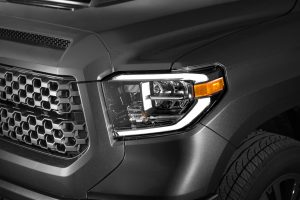
Nissan’s Titan is the only other 1500 that also comes standard with a V8 engine.
And a bigger (5.6 liter) standard V8 engine.
Base price for the 2017 Titan (when this review was written in early October, info about the 2018s was not yet available) with the 5.6 liter V8, 2WD and an eight-foot bed is $29,580.
WHAT’S NEW
The major changes for 2018 are a new front clip/grill treatments – and no more regular cab.
Also, the formerly optional Toyota Safety Sense system – which bundles automated emergency braking/lane departure warning/pedestrian detection and dynamic radar cruise control – is now standard in all trims.
Regardless of trim, a V8 is standard.
The V8 is fed via port fuel injection, not direct injection.
Higher standard tow rating (10,500 lbs.) than Big Three rivals and also the V8 Titan (which maxes out at 9,740 lbs.)
Simpler drivetrain technology should prove more long-term durable and less maintenance-intensive.
No step ladder or Metamucil pole necessary to get into the bed.
Big Three trucks cost less to start and offer more cab/bed/drivetrain configurations.
Some offer stronger (or diesel) engines.
Crew Cab versions (four full-sized doors) come only with stubby 5.6 foot bed.
No more regular cab.
Double cab with eight-foot bed is nearly a foot longer overall (247.8 inches vs. 228.9 inches) than last year’s regular cab with the eight-foot bed.
The Tundra’s standard and optional engines are the same as before.
Which is good.
The lineup starts with a 4.6 liter V8 that makes 310 hp and 327 ft.-lbs. of torque; optional (and standard in Platinum, Limited, TRD PRO and 1794 trims (the latter named after the huge ranch in Texas) is a 5.7 liter V8 that makes 381 hp and 401 ft.-lbs. of torque.
These engines aren’t direct-injected – the newest/latest (but by no means best) thing. DI engines are susceptible to carbon fouling because no fuel – which is a solvent – washes over the backsides of the valves, helping to keep them free of carbon build-up. Instead, the fuel is shot directly into the cylinder at extremely high pressure – which necessitates two fuel pumps to step up the pressure. The Tundra’s port fuel injection system does not suffer these afflictions. It is slightly less fuel efficient as a result (more on this in a moment) but who cares about that when it comes to a truck? 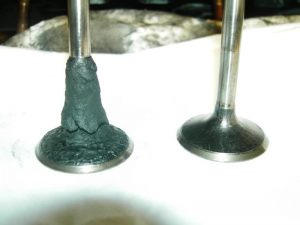
So why is everyone going over to DI? It’s not because customers are demanding the slight fuel efficiency benefit it delivers. It is because the government’s fuel economy demands are becoming so severe that DI – and other such elaborate acts of engineering desperation – are the only ways to meet those demands.
And why hasn’t Toyota gone over? It’s only because of lag time. The current Tundra dates back to 2007, when fuel economy fatwas weren’t as severe. When Toyota revamps the Tundra – looks like 2019 – expect it to be direct-injected and other things, too.
But for now . . .
Big, simple V8s with port fuel injection like the Tundra’s may not be Latest Thing, but they are known good things – durable and rugged. Ditto the simpler six-speed automatic transmission that comes standard with both the Tundra’s V8s – vs. the seven, eight and ten-speed automatics in the Nissan, GM and Ford trucks.
Word is the next Tundra will also go down that road.
Carpe Diem.
The ’18 Tundra’s also got a higher standard towing capacity – 10,500 lbs. – than the rival 1500s can manage with their smaller/lighter-duty standard equipment sixes.
Or the the Titan – with its standard (and larger, more powerful) V8.
Tow ratings are, however, somewhat arbitrary. They are posted by the manufacturers according to their own internal criteria and can be conservative (or optimistic) depending on what the manufacturer decides to emphasize. Or how much they decide to push the envelope. Keep in mind that tow ratings are as much a function of things like frame strength and the expected durability of the transmission when yoked to a heavy load as they are of horsepower and torque numbers.
A 4.6-equipped Tundra gets to 60 in just under 7 seconds; models with the stronger 5.7 V8 get there in about 6.3 seconds. Official gas mileage stats for the 2018s weren’t available when this review was written in early October 2017, but given the ’18 is the same basic truck as the ’17, they ought to be about the same. EPA says the 2017 Tundra with the 4.6 liter V8 and 2WD is good for 15 city, 19 highway; 13 city, 17 highway with the larger 5.7 V8 and 4WD.
It’s worth a mention that while the Tundra’s appetite for gas is greater than its turbocharged and aluminum-bodied rivals, the difference isn’t very great.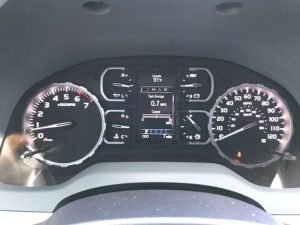
A Ford F-150 equipped with its power-comparable 2.7 liter twin-turbo V6 (325 hp, 400 ft.-lbs. of torque) rates 18 city, 24 highway. You get about 4 or so MPG better. But you also get the potential down the road worries that come with two turbos, ten speeds and an aluminum body.
These features may be desirable in cars, but in trucks – which often live hard lives in not-ideal conditions – it’s debatable whether the slight fuel efficiency gains are worth all the trouble and potential expense.
Aside from their simpler (and proven) design, another virtue of both the Tundra’s V8s is that they are regular fuel engines; several of the others require premium – which costs significantly more; about 40 cents more per gallon in my area.
Though it’s about the same size as other 1500s, the Tundra somehow feels – and drives – less Huge.
Here’s how it does that.
First, there’s less of it projecting forward. It is stubbier – from the A pillars at the base of the windshield to the front bumper. The front clip/hood is about Camry-sized, as far as how long it is. You don’t feel as though you are on the bridge of a supertanker, the prow miles ahead in the mist.
And it’s more than feel.
Because there’s less schnoz, the Tundra has more effective clearance. Tight turns – where there are things you might hit on either side of the thing – are less hairy and can generally be done without having to stop, back up, then inch forward – repeat.
The tested crew cab/short bed’s turning circle is three feet tighter than the same configuration F-150’s: 44 feet vs. 47.1 for the Ford.
And four feet tighter than the Titan’s (48 feet).
That is a big difference.
The extra cylinders, too.
It’s true the smaller standard V6s in rivals like the F-150, Silverado 1500 and Ram are nearly as powerful as the Tundra’s standard V8, but they don’t make as much torque – and what they do make, is made higher up in the rev range. The Tundra’s standard 4.6 V8 produces 327 ft.-lbs. at 3,800 RPM. The standard 3.5 liter V6 in the F-150, as a counter-example, only makes 253 ft.-lbs. and not until 4,250 RPM.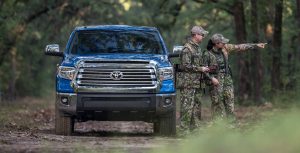
And of course, there’s sound.
That V8 lope. Nothing else quite like it.
Or that tows like it.
A 26.4 gallon fuel tank is standard – but you can upgrade to 38 gallons (the larger tank is standard in Limited, Platinum, 1794 and TRD trims) which gives the truck long highway legs – almost 500 miles – even with the 5.7 V8 and 13 MPG.
Though it’s not as quick as the class-quickest Chevy Silverado armed with its top gun 6.2 V8 (which is basically the Corvette’s V8 snugged into a truck) the Tundra is nobody’s slow poke. Its zero to 60 time is about the same as the zero to 60 run posted by the 1970 Ferrari 365 GTB/4 Daytona I recently retro-viewed (see here for that).
Today’s 1500 trucks are not only quicker than most muscle cars ever were – they are nearly as quick as supercars once were.
This truck – being an older design – still has a leaf spring rear suspension (some of the others -the Nissan Titan is one – have coil spring rear suspensions) so the ride is a little stiffer and on washed-out/rutted gravel roads, there’s more axle hop than in the newer-design trucks.
But the Tundra’s one-finger steering – and tighter turning circle – makes up for a lot of that.
Besides which, leaf springs are simple and tough and durable – you know, the design attributes that used to be desirable in a truck.
The Tundra’s being an older design is a good thing in other ways, too.
The still-steel body, for one.
If you dent the bedwall, it’s a straightforward fix to pull the dent or weld in a new panel. With aluminum panels – like the Ford F-150’s – it’s not as straightforward. But it is more expensive. Aluminum is harder to work, requires dedicated work space at the body shop due to cross-contamination issues and takes more skill to weld than steel.
All of which is going to cost you. In insurance premiums as well as repairs.
Ford (and the others who have done this) went to aluminum to cut weight in order to increase fuel economy, to placate fatwa-issuing federal bureaucrats. Same reason the industry is going over to turbo’d V6s and ten-speed transmissions.
It is understandable. But it may not be advisable – from the perspective of the people who actually own the trucks. Seen that video which shows what happens when a heavy toolbox gets dropped onto the aluminum bed of an F-150? 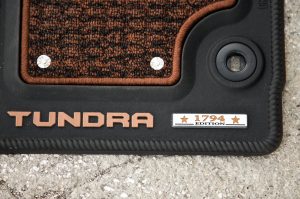
Another thing about the Tundra that’s good – and a function of it being an older design than the others: It has not-too-tall bedwalls. They are still tall – about 55 inches, or about a foot taller than the bedwalls of my compact-sized ’02 Nissan Frontier pick-up – but not so tall that a tall guy like me (6 ft. 3) has to stand on tip-toes to just barely be able to touch the bed floor. I can almost lay my palm flat on the bed, without both feet flat on the ground.
I wasn’t able to do that with the last Silverado or F-150 I test drove.
CodPiece Fever hasn’t yet caught up to the Tundra.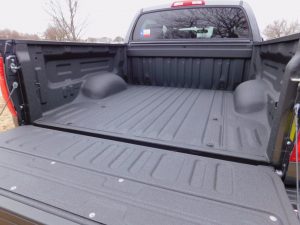
It is big, certainly. But it’s not as overwhelmingly outsized in proportions as some of the current 1500s. The shorter front clip, the not-quite-as-high roofline, the not-too-tall bedwalls.
It’s more manageable.
But, there’s a downside. Well, two of them.
First, the disappearance of the regular cab from the roster. It was available with an eight foot bed, which you can still get – but now the long bed comes with a four-door (Double Cab)body, which adds close to a foot of overall length to the thing. That’s a foot less space in your garage – and a foot more space you’ll need to find a curbside parking slot for it.
And the Crew Cab (four full-size doors) Tundra is only available with a 5.6 foot short bed, which effectively means it hasn’t got much more room than the bed of a compact-sized truck like my ’02 Frontier with a six foot bed. You can make more space by dropping the tailgate – but that means having to tie your load down.
On the other hand, you do get 42.3 inches of backseat legroom with this combo.
Both cab styles come standard with power sliding rear glass (horizontal sidling in the Double Cab, vertical sliding in the Crew Cab). Because unlike in the now-deceased regular cab, the driver can’t reach the rear glass anymore.
All Tundras have more-than-usual ground clearance – 10.4 inches, minimum, including the base 2WD version.
The 1794 edition comes with handsome cowboy suede seat inserts and even better – because extremely politically incorrect – floormats decorated with what looks like spent .45 Colt brass.
If Hillary sees this, she will chew the carpet.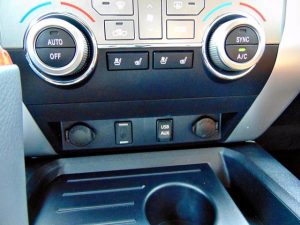
There are three power points on/in the center console, but only one USB hook-up, a small tell-tale about the Tundra’s age. Newer-design rivals have several USB hook-ups and the Chevy is available with in-truck WiFi.
But, the Tundra is less bedazzled by gadgets – there are fewer displays and buttons and menus to scroll through – which makes it (again) both simpler and less trouble-prone and also easier to just drive.
With the exception of the new suite of “safety” items.
They add buzzers and lights – and so, distraction and annoyance. Most can be disabled or turned off, though. 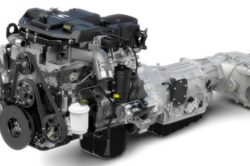
It will be interesting to see whether Toyota is able to offer the diesel it’s been toying with offering.
The latest press materials make no mention, which isn’t encouraging. The problem is that in order to pass muster with the EPA’s emissions requirements – which are getting close to the point of requiring zero emissions – this is not an exaggeration – manufacturers have had to resort to technologies and designs that makes diesels more expensive and – yes – less fuel efficient. Also more maintenance-intensive. That makes Uncle-compliant diesels a much harder sell – which is why so few diesel engines are available in trucks – or anything else for that matter.
Maybe next year.
THE BOTTOM LINE
Some things do get better with age.
. . .
Got a question about cars – or anything else? Click on the “ask Eric” link and send ’em in!
If you like what you’ve found here, please consider supporting EPautos.
We depend on you to keep the wheels turning!
Our donate button is here.
If you prefer not to use PayPal, our mailing address is:
EPautos
721 Hummingbird Lane SE
Copper Hill, VA 24079
PS: EPautos stickers are free to those who send in $20 or more to support the site. Also, the eBook – free! – is available. Click here. Just enter you email in the box on the top of the main page and we’ll email you a copy instantly!


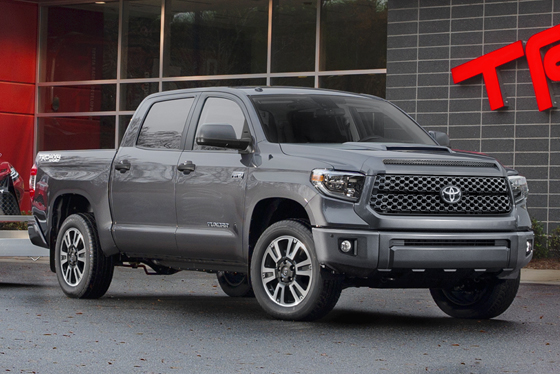

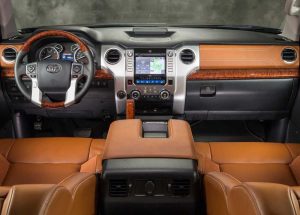
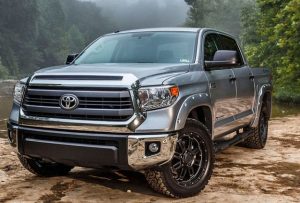
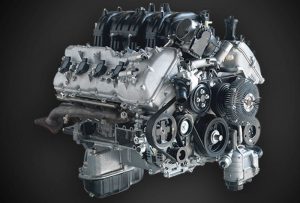


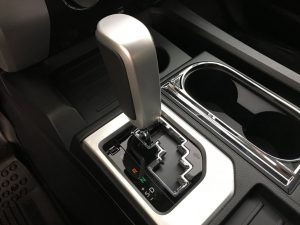

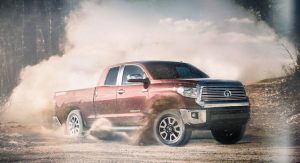
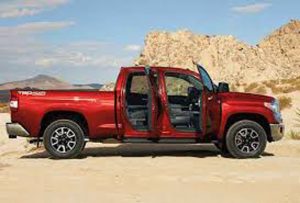









The flex fuel 5.7 v8 in a 4×4 seems reasonably priced as compared to a standard 5.7 v8 4×4. Why is this? I assume if it is run on regular gas it would last even longer than the standard 5.7 v8. I am seriously considering a Tundra before any future “update” which will lower quality in the long run. Any insight into the flex fuel engine would be appreciated.
If you want a truck and not a Southern California commuter, opt for a domestic 2500 series truck. As long as you don’t need King Ranch luxury, an F250, Ram 2500 or Chevy/GMC 2500 gets you much more truck. Try building and pricing an F150 XL single cab 8′ bed 4 x 4 and an F250 XL single cab 8′ bed 4 x 4 with a 6.2 gas engine. I built an F250 with every mechanical, off road and tow option for under $40,000. The street price is around $34,000 and you get a real truck.
I’m looking at buying a new pickup and have reduced the list to the Tundra and the Titan. If Nissan could resolve their transmission problems, it would be my choice as it still offers the standard cab with the 8ft bed. But since they can’t, I’ll go for the truck that’s approximately the size of a 1960’s Cadillac.
Hi Charles,
I hear you; my preference would also be the regular cab/eight foot bed. But except for this omission, the Tundra’s a proper truck, relatively free of the things that have rendered so may of the others less so – and more so, overcomplex, over-expensive, post-warranty debacles waiting to happen.
It’s not just the DI thing. Here’s an article where Toyota is allowing the possibility of a…sigh….hybrid drivetrain in their pickups.
http://www.autoguide.com/auto-news/2017/10/toyota-isn-t-ruling-out-the-idea-of-a-hybrid-pickup-truck.html
Maybe I’ll just buy a pre-1988 model chevy pickup, throw in a crate LS engine, and call it good.
Eric,
Price an F250 6.2 regular cab 4×4 8 foot bed.
No way in hell Toyota releases a new Tundra in 2018 (2019 model year). The earliest you would see one is 2020 (for the 2021 model year) Toyota sticks to their 7 year Refresh/renew cycle. They refreshed the 2007 in 2014 and they will renew in 2021. Toyota is puling out all the gimmicks to extend the life of this truck. Release a larger tank one year, release the PRO. For 2018 they add the Safety package and they stop production of the pro. You will likely see another PRO in 2019 or 2020. They are constantly dripping options and features which should have been released in 2014 a little each year to keep sales up.
They have San Antonio plant geared up for Tacoma’s, don’t see anything changing.
Hi Caey,
If they’re smart! They would be foolish to ape Ford and GM and add a ten speed transmission and an aluminum body and all the rest of it. Buyers aren’t clamoring for these things. They are technical acts of desperation to appease the government. It is time to stand up to the government. Tell the government to stick to protecting people’s rights and stay out of things that are none of its business, such as dictating fuel economy standards.
I hate all of the safety bullshit buzzers and lights that come standard with the all 2018 models. They were the last holdout on that. RIP “unsafe” Tundra option.
Hi Ancap,
Yup.
Same goes for the V8 without DI and a simple six-speed transmission. The 2019 will have DI and (from what I hear) a none speed transmission. Plus all the saaaaaaaaaaaaaaaaaaaaafety stuff, too.
Eric, I believe all of these are manufactured a few hours drive from me, in San Antonio, TX.
They are!
San Antoyota TX
https://www.youtube.com/watch?v=Tlb9yYAVgF4
San Antonio officials announce bid to win $1.6 billion Toyota factory
http://www.mysanantonio.com/business/local/article/Toyota-says-plans-to-build-more-Tacomas-in-Mexico-11734393.php
And the V8 motors are built in Huntsville, Alabama.
re this:
“Seen that video which shows what happens when a heavy toolbox gets dropped onto the aluminum bed of an F-150?”
Turns out that video is deceptive for several factors, including whether the Chevy bed got punctured or not — here’s a video unmasking the deception:
https://www.youtube.com/watch?v=FrRPEEYVLiM
This doesn’t take away from your valid point that aluminum is structurally inferior to steel from a long-term cost of repair perspective, but the ad itself is bullshit, aka marketing.
Hi Jim,
Hat tip for that!
Didn’t recent Tundras also offer a load bed around 6.5′ long? Is that still available? It was a pretty good compromise length.
Six and a half is their “standard” size, and yes its still offered. Their short bed is five and a half. Long bed of course eight feet. The (on the build your own part of the website) $30,845 truck comes with a standard size, not the long bed. The eight foot bed bumps the price up to $32,445.
Eric, what truck could you get for the adv. ($31,120) starting price? Pick the 6.5 bed its $30,845, and the 8 bed it’s $32,445. Why doesn’t Toyota say $30,845 as the starting price?